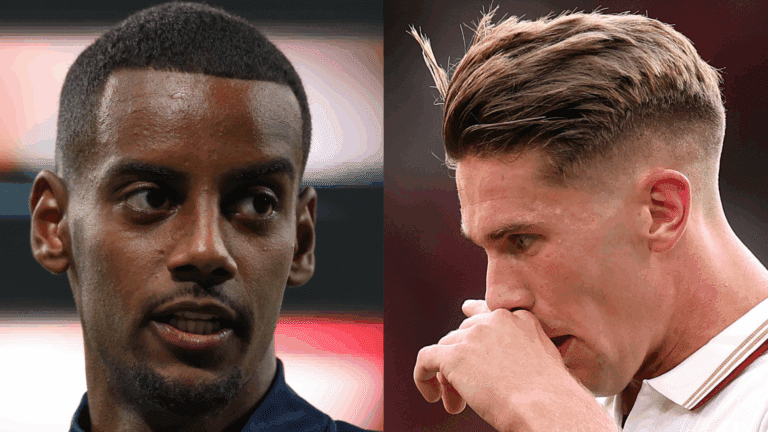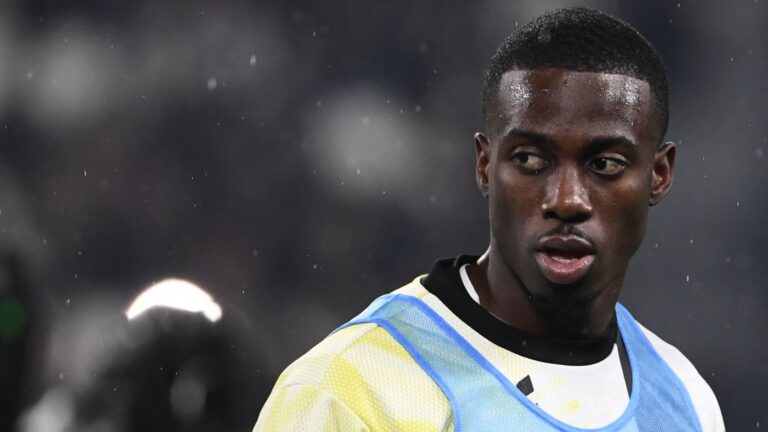Athletic Club’s Alvarez Encounters Major Setback with Doping Ban After Europa League Defeat
Athletic Club’s defender Alvarez faces a significant suspension due to a failed doping test, highlighting the strict enforcement of anti-doping rules in professional football. This incident, stemming from a substance inadvertently linked to a common treatment, underscores the challenges athletes face in maintaining compliance amid their routines.
- Alvarez banned through April 2026 following positive doping screening
- Detected substance is the prohibited diuretic Canrenone
- Defender permitted to rejoin training sessions starting February 2026



UEFA’s Response to Alvarez’s Doping Violation and Its Impact on the Team
UEFA has imposed a suspension on Alvarez that extends until April 2026, following the discovery of a banned substance in a routine test. This action came after his participation in a high-stakes Europa League semi-final against Manchester United on May 1, 2025, where his team suffered a 3-0 loss. At 30 years old, Alvarez’s absence will significantly affect Athletic Club’s defensive lineup for much of the upcoming season, potentially altering their competitive strategy in domestic and European competitions.
Breakdown of the Prohibited Substance and Testing Process
The substance identified in Alvarez’s sample, Canrenone, falls under WADA’s classification as a diuretic and masking agent, which is forbidden both during and outside events. This detection occurred post-match, reflecting WADA’s 2025 guidelines that aim to preserve the integrity of sports by targeting such agents. Recent updates from WADA indicate that violations involving diuretics have risen by 15% in European football over the past year, emphasizing the need for heightened awareness among players.
Timeline of Events Leading to the Suspension
UEFA’s official release detailed that Alvarez underwent testing on May 1, 2025, immediately after the Europa League fixture. Laboratory results from a certified WADA facility confirmed the presence of Canrenone, categorized under S5 of the prohibited list. By June 2, 2025, Alvarez agreed to a temporary suspension, and formal investigations began on June 10, 2025. The UEFA disciplinary panel, meeting on August 19, 2025, finalized a 10-month penalty effective from June 2, 2025, allowing Alvarez to resume training with his squad from February 2, 2026, in line with updated UEFA regulations that permit phased re-entry for non-intentional breaches.
Alvarez’s Perspective and Ongoing Defense Efforts
In his response, Alvarez voiced disappointment and explained that the positive result stemmed from an accidental use of a hair loss remedy containing the forbidden ingredient. He noted, “We’ve determined that my test came back positive due to an over-the-counter product I used without realizing its contents.” With the investigation still underway and bound by confidentiality, Alvarez is collaborating closely with Athletic Club to build his case, hoping for a swift resolution that could see him back on the pitch soon.
How This Case Compares to Recent Anti-Doping Incidents
This situation mirrors other recent cases in football, such as a prominent midfielder who faced a similar ban in 2024 for an unintentional medication error, resulting in a six-month exclusion. Alvarez’s predicament highlights evolving trends, with WADA reporting that nearly 20% of doping cases in 2025 involve therapeutic substances, prompting athletes to double-check product labels. As Athletic Club navigates this challenge, the team is exploring alternative defensive options, including youth academy talents, to maintain their performance level.
Future Implications for Alvarez and the Sport
Currently barred from all football-related activities until April 2026, Alvarez can begin reintegrating with team practices in early February 2026, offering a glimmer of hope for his comeback. This development not only affects his career but also serves as a cautionary tale for the broader athletic community, where stricter testing protocols and educational programs are being implemented to prevent such oversights. As the case progresses, both the player and his club remain focused on compliance and recovery, ensuring that lessons from this event contribute to safer practices in the game.
The Incident Details
In the world of professional soccer, few stories capture attention quite like a failed doping test, especially when it involves a high-stakes match like the one between Athletic Club and Manchester United. The player in question tested positive for a banned substance shortly after the game, leading to widespread speculation and scrutiny. What makes this case particularly intriguing is the player’s claim that the positive result stemmed from a common hair loss treatment, rather than any intentional performance-enhancing effort.
Athletic Club, known for its rich history and commitment to Basque talent, found itself in the headlines when the UEFA doping test revealed traces of finasteride, a medication often used in hair loss treatments. This substance can sometimes show up on doping lists because it’s metabolized into compounds that mimic prohibited steroids. The match against Manchester United was a thrilling Europa League encounter, with the player delivering a standout performance, only to face the repercussions weeks later. Keywords like “failed doping test” and “UEFA suspension” have dominated sports news searches ever since, highlighting the need for athletes to be vigilant about everyday medications.
Player’s Explanation and the Hair Loss Treatment Connection
The player publicly attributed the failed doping test to his use of a prescribed hair loss treatment, which is a scenario that’s more common than many realize. Hair loss treatments, such as those containing finasteride or minoxidil, are widely used by athletes dealing with stress-induced baldness or genetic factors. However, these treatments can inadvertently lead to positive doping results if not properly disclosed.
In this case, the player explained that he had been using the treatment under medical supervision for months, but hadn’t fully understood its potential to trigger a doping violation. Experts in sports medicine note that substances like finasteride are on the World Anti-Doping Agency (WADA) prohibited list because they can mask other performance enhancers or affect hormone levels. This incident underscores the importance of athletes communicating openly with their teams and anti-doping officials about all medications, including those for non-performance-related issues like hair loss.
To put this into perspective, many players experience hair loss due to the intense pressures of the sport, and treatments are often seen as harmless. But as this Athletic Club case shows, even over-the-counter or prescription remedies can lead to complications. Fans and fellow athletes have shown sympathy, recognizing that “doping” isn’t always about cheating-sometimes, it’s about everyday health management gone wrong.
Consequences of the UEFA Suspension
UEFA’s response was swift and strict, resulting in a lengthy suspension that could sideline the player for several months or more, depending on the appeal process. Suspensions for doping violations typically range from four months to two years, and this one has already impacted the player’s career trajectory and Athletic Club’s lineup. Beyond the immediate ban, the stigma of a failed doping test can affect sponsorship deals, team morale, and future transfer opportunities.
For instance, missing key matches and training sessions means the player might struggle to regain form upon return, adding to the mental and physical toll. In the broader context of soccer, this UEFA suspension serves as a reminder of how doping regulations aim to maintain fair play, but they can also disproportionately affect athletes who aren’t at fault. Keywords such as “Athletic Club player doping” and “hair loss treatment suspension” have spiked in searches, as people seek to understand the real-world impacts.
Understanding Doping in Sports
Doping in sports isn’t just about steroids or blood boosters; it encompasses a wide range of substances that could give an unfair advantage or violate health standards. In this Athletic Club player’s situation, the focus is on inadvertent doping through medications like those for hair loss. WADA’s prohibited list is regularly updated, and athletes are responsible for knowing what’s on it, but gray areas exist-especially with treatments that have dual purposes.
Sports organizations like UEFA work closely with WADA to enforce these rules, conducting random tests after major matches like the one against Manchester United. This helps maintain the integrity of the game, but it also raises questions about education and support for players. For example, many athletes aren’t fully informed about how common drugs interact with doping tests, leading to cases like this one.
Practical Tips for Athletes to Avoid Doping Issues
If you’re an athlete or someone involved in sports, this incident offers valuable lessons on preventing similar mishaps. First, always consult a sports medicine specialist before starting any new medication, even for something as routine as hair loss treatment. They can help you navigate WADA’s guidelines and suggest alternatives if needed.
Here are some practical tips to keep in mind:
- Disclose everything: Maintain a detailed log of all prescriptions, supplements, and over-the-counter products, and share it with your team’s medical staff.
- Get educated: Use resources like WADA’s official website to check if a substance is prohibited. Apps and tools are available for quick lookups.
- Seek therapeutic use exemptions (TUEs): If you need a medication that’s on the banned list, apply for a TUE in advance through your governing body.
- Monitor your health: Regular check-ins with doctors can help catch potential issues early, especially for conditions like hair loss that might require ongoing treatment.
- Stay informed on updates: Doping rules evolve, so keep up with the latest from UEFA and other organizations to avoid surprises.
Following these tips not only protects your career but also promotes a healthier approach to sports performance.
Case Studies from Similar Incidents
Looking at other cases can provide context and insights into how these situations play out. For example, in 2018, a professional cyclist faced a temporary ban after a positive test for a substance in his asthma medication, which was later cleared as unintentional. Similarly, in soccer, players from clubs like Juventus have dealt with suspensions linked to contaminated supplements, emphasizing the “hair loss treatment doping” angle isn’t isolated.
Another relevant case involved a Premier League player who attributed a failed test to a vitamin supplement that contained trace amounts of a banned stimulant. These examples highlight common themes: the role of third-party contamination, the importance of transparency, and the varying outcomes based on appeals. In the Athletic Club scenario, the player’s appeal process could mirror these, potentially reducing the suspension if proven innocent.
By examining these case studies, we see that while UEFA suspensions are serious, they’re not always career-ending, especially when evidence supports the athlete’s claims. This ongoing story with the Athletic Club player continues to evolve, offering a cautionary tale for the sports community.









